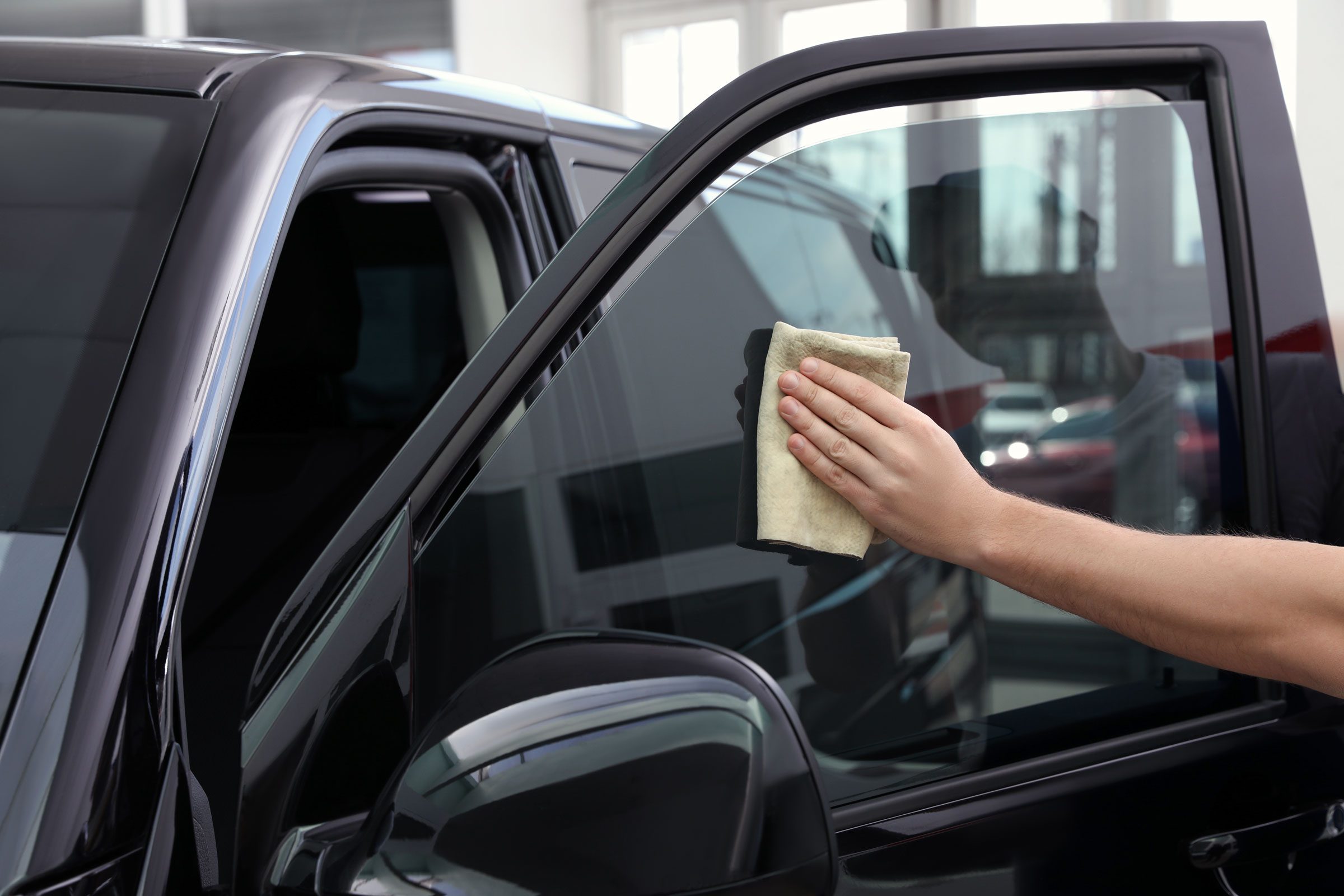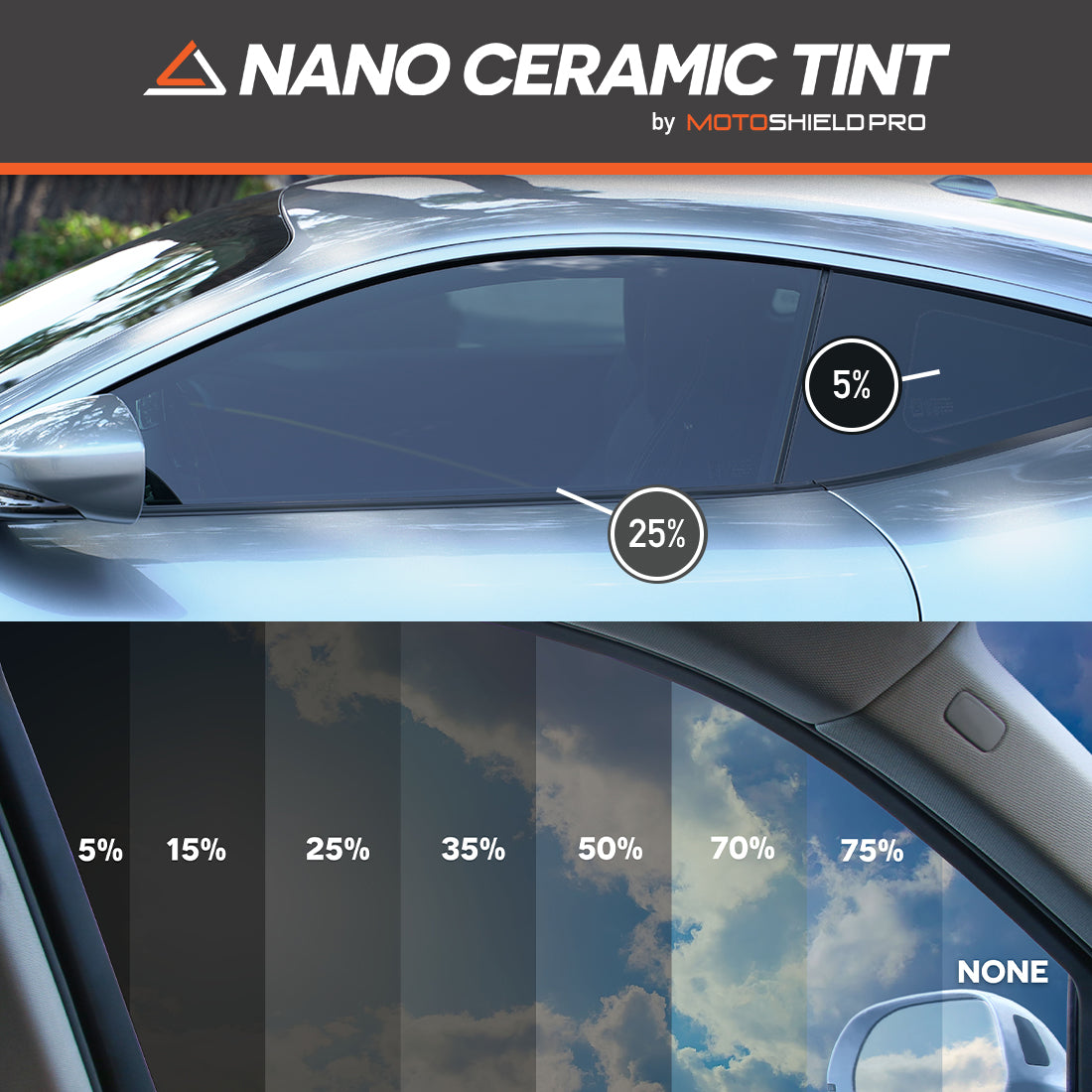Window Tinting Options: Locate the Right Shade for Your Design and Demands
Selecting the ideal window tint for your car entails a cautious factor to consider of different elements, consisting of individual aesthetics, useful demands, and lawful limitations. With options varying from light tintss that supply very little privacy to darker tones that improve privacy, the options can be overwhelming.
Recognizing Window Tinting Degrees
When considering window tinting, it is important to understand the numerous levels of tint available, as they dramatically impact both visual appeals and capability. Window tinting is classified based on Visible Light Transmission (VLT) percentages, which suggest the quantity of light allowed to go through the glass. The VLT portion can vary from very light (over 70%) to extremely dark (listed below 5%)
The main degrees of tint include clear, which offers UV security without modifying exposure; light tint (over 50% VLT), which slightly minimizes glare while preserving presence; medium tint (around 35% VLT), striking a balance between personal privacy and light transmission; and dark tint (listed below 20% VLT), providing considerable personal privacy and warm decrease yet limiting external presence.
Understanding these levels is critical as they can impact driving security, lawful conformity, and personal convenience. Additionally, regional regulations commonly dictate acceptable tint degrees, differing by state or municipality. Prior to picking a color, it is advisable to research study and make sure adherence to these laws while considering personal preferences for design and useful benefits.
Popular Tint Shades Explained

Among the most popular alternatives is the traditional dark tint, commonly ranging from 20% to 5% VLT (Noticeable Light Transmission) This shade offers optimum privacy and a streamlined, advanced appearance. It efficiently obstructs UV rays and heat, making it suitable for sunny environments, though it may limit presence at night.
Alternatively, lighter shades such as 35% or 50% VLT offer a more subtle look while still offering some degree of personal privacy. These tones are perfect for those seeking an equilibrium in between aesthetic appeals and capability, as they permit much better presence and follow different lawful standards.
One more arising choice is the ceramic tint, which can come in a range of tones - window tinting. It supplies exceptional warm denial and UV defense without considerably changing the automobile's look

Lawful Regulations for Window Tinting
Comprehending the lawful laws bordering window tinting is vital for automobile owners seeking to tailor their vehicles. Each state in the united state has particular laws controling the darkness or lightness of window tintss, typically gauged by Visible Light Transmission (VLT) percent. VLT refers to the quantity of light that can go through the movie and the glass integrated.
In numerous states, policies determine different VLT percents for numerous windowss, consisting of front windshields, side windowss, and rear windowss. For circumstances, some states might allow a tint of 70% VLT for windshields while permitting darker tintss for back windowss. In addition, particular states have restrictions on reflective tintss, which can create glare for other vehicle drivers.
Failing to follow these laws can lead to fines, mandated elimination of the tint, and increased my review here insurance costs. Vehicle proprietors ought to speak with regional laws or state DMV websites to guarantee they are within lawful restrictions before continuing with installation. Recognizing these policies not only helps prevent lawful consequences yet likewise makes certain a safe driving experience.
Advantages of Different Tint Materials
Exploring the benefits of numerous tint materials reveals significant benefits that can boost both the capability and visual charm of a vehicle. Each material supplies unique characteristics suited to details needs and preferences.
Dyeded window films are prominent for their cost and ability to decrease glow. Metalized films, on the various other hand, deal exceptional warm reduction and UV defense due to their reflective buildings.
Ceramic window films represent a premium option, supplying phenomenal warm rejection while maintaining exposure. They are non-metallic, hence preventing any signal disruption, and are very durable, resisting scrapes and fading with time. Furthermore, ceramic films do not include dyes, making certain a longer-lasting look.
Lastly, hybrid films incorporate aspects from dyeded and metalized alternatives, offering a well balanced efficiency in terms of heat rejection, glare decrease, and expense. Each tint product offers special functions, allowing lorry proprietors to select the most effective suitable for their way of life and aesthetic choices, eventually boosting their driving experience.
Picking the Right Tint for You
Finding the right window tint involves taking into consideration different variables, consisting of individual preferences, car kind, and local regulations. Examine your personal style and wanted degree of personal privacy, as these will certainly Related Site guide your choice of tint shade. Darker tintss provide enhanced privacy yet may not appropriate for all motorists, especially those who choose an even more open feeling inside their vehicle.
Following, consider your lorry kind, as the size and shape of windowss can affect the performance of specific tintss. For example, larger windowss might gain from reflective tintss that decrease glow while smaller windowss could be a lot more suited to dyeded films that use refined aesthetic appeals.
Additionally, it's crucial to examine regional regulations pertaining to window tinting. Lots of states enforce restrictions on the permitted darkness and reflectivity, specifically for front windowss. Compliance with these laws is crucial to prevent penalties and ensure safety.
Last but not least, assess the tint material that finest fits your requirements. Alternatives include dyeded, metalized, ceramic, and crossbreed films, each offering special benefits associating to warmth rejection, UV defense, and durability. By thinking about these elements, you can confidently select a window tint that aligns with your style and useful demands.
Final Thought
To conclude, picking the ideal window tint calls for cautious factor to consider of numerous variables, including VLT percents, neighborhood regulations, and the wanted visual. Various tint products use one-of-a-kind benefits that can enhance vehicle comfort and protection. By extensively understanding the offered options and straightening them with functional needs and specific preferences, one can accomplish an ideal balance in between design and performance in window tinting selections.
Choosing the ideal window tint for your automobile entails a cautious consideration of different factors, including personal looks, official source useful needs, and legal restrictions. Each state in the U.S. has certain legislations regulating the darkness or agility of window tintss, usually measured by Visible Light Transmission (VLT) percentage. Some states might permit a tint of 70% VLT for windshields while permitting darker tintss for rear windowss.Finding the right window tint entails taking into consideration various elements, consisting of individual preferences, vehicle kind, and neighborhood policies.In conclusion, selecting the proper window tint needs cautious factor to consider of various elements, consisting of VLT percents, neighborhood policies, and the wanted aesthetic.